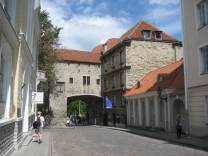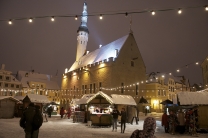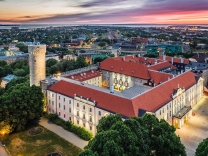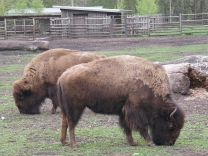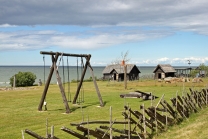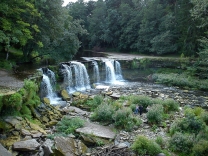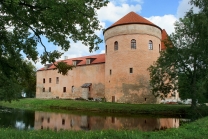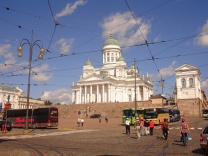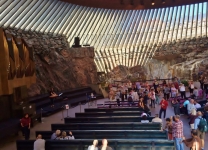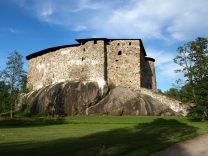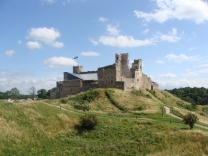Kadriorg Palace
No video yet
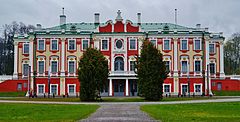
Kadriorg Palace
Kadriorg Palace (Estonian: Kadrioru loss, German: Schloss Katharinental) is a Petrine Baroque palace built for Catherine I of Russia by Peter the Great in Tallinn, Estonia. Both the Estonian and the German name for the palace means "Catherine's valley". It was built after the Great Northern War for Nicola Michetti's designs by Gaetano Chiaveri and Mikhail Zemtsov. The palace currently houses the Kadriorg Art Museum, a branch of the Art Museum of Estonia, displaying foreign art from the 16th to 20th centuries. The KUMU branch of the museum, showing Estonian art from the 18th century onwards is located nearby in the park.
Construction
Stucco decoration with Catherine's initials in the great hall of the palace.After the successful siege of Tallinn during the final phase of the Great Northern War in 1710 czar Peter the Great of Russia bought a small Dutch-style manor house at Lasnamäe for his wife Catherine. The house today is the result of a drastic renovation ordered by Nicholas I of Russia in 1827.
However, plans for a larger palace in the area soon developed and construction of a new palace, Kadriorg, was started on 25 July 1718. Peter and Catherine visited the unfinished residence on several occasions, but after the emperor's death in 1725 Catherine showed no interest in the seaside property. The great hall with Catherine's initials and profuse stucco decor (attributed to Heinrich von Bergen) survives, while many other interiors have been altered.
The gardener Ilya Surmin was responsible for the flower garden with two fountains and the so-called mirage garden on several levels. The layout of the park shares similarities with that of Strelna.
Restoration
After the death of Peter the Great, the palace received little attention from the Russian royal family. It was sporadically visited, by the empress Elisabeth and Catherine the Great. In 1828-1830 extensive restoration works of the palace and grounds took place. Between 1741 and 1917, the palace also housed the civilian governor of the Governorate of Estonia.
After the declaration of independence of Estonia in 1919,...






